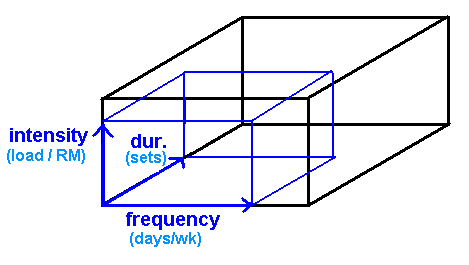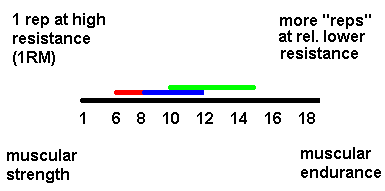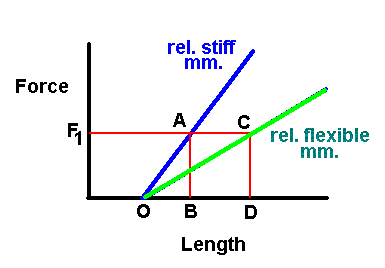The formula permits one to "assess muscular strength in a safe, efficient manner ... [without requiring] clients to attempt maximum lifts " (Brzycki, 2000). Brzycki's equation predicts the 1 RM in a bench press more accurately than competing formulas, as long as its estimate is based on ten or fewer repetitions (Mayhew, Prinster, Ware, Zimmer, Arabas, & Bemben, 1995).
American College of Sports Medicine. (1998). American College of Sports Medicine position stand. The recommended quantity and quality of exercise for developing and maintaining cardiorespiratory and muscular fitness, and flexibility in healthy adults. Medicine and Science in Sports and Exercise, 30, 975-91. (full text version is available on Medline; Unique Identifier 98287757)
Arnheim, D. D., & Prentice, W. E. (1993). Principles of athletic training. St. Louis: Mosby.
Benn, C., Forman, K., Mathewson, D., Tapply, M., Tiskus, S., Whang, K., & Blanpied, P. (1998). The effects of serial stretch loading on stretch work and stretch-shorten cycle performance in the knee musculature. Journal of Orthopedic and Sports Physical Therapy, 27, 412-22.
Brzycki, M. (1993). Strength testing - Predicting a one-rep max from a reps-to-fatigue. Journal of Physical Education, Recreation and Dance 64 (1), 88-90.
Brzycki, M. (June, 2000). Assessing strength. Fitness Management. Retrieved April 13, 2001, from the World Wide Web: http://www.fitnessworld.com/info/info_pages/library/strength/assess0600.html
Feigenbaum, M. S., & Pollock, M.L. (1997). Strength training: Rationale for current guidelines for adult fitness programs. Physician and Sportsmedicine, 25, 44-64.
Graves, J. E., Pollock, M. L., Jones, A. E., Colvin, A. B., & Leggett, S. H. (1989). Specificity of limited range of motion variable resistance training. Medicine and Science in Sports Medicine, 21, 84-89.
Graves, J.E., Pollock, M.L., Foster, D., Leggett, S.H., Carpenter, D.M.,Vuoso, R., & Jones, A. (1990). Effect of training frequency and specificity on isometric lumbar extension strength. Spine, 15, 504-509.
Mayhew, J.L., Prinster, J.L., Ware, J.S., Zimmer, D.L., Arabas, J.R., & Bemben, M.G. (1995). Muscular endurance repetitions to predict bench press strength in men of different training levels. Journal of Sports Medicine & Physical Fitness. 35(2), 108-13.
Sale, D.G. (1988). Neural adaptation to resistance training. Medicine & Science in Sports & Exercise, 20, S135-45.
Wilson, G.J., Elliott, B.C., & Wood, G.A. (1992). Stretch shorten cycle performance enhancement through flexibility training. Medicine & Science in Sports & Exercise, 24, 116-123.



